
Rightsizing the automobile for local mobility
Half of the work of urban design is deciding where to store cars. It’s a common lament of urban design professionals. In my community, controversy is brewing because Bay Area Rapid Transit (BART) and housing advocates want to build housing on a BART station’s surface parking lots. As usual NIMBYs are protesting, but other more reasonable people who live in nearby hillside homes are also protesting, worried that without BART parking they would face exhausting walks or bicycle rides uphill from the station at the end of train commutes.
Some hope for a structured parking garage that would preserve the existing parking capacity on less land, thus allowing room for some housing. But a garage that supports the weight of hundreds of cars is expensive, and a future of electric cars —which are heavier than gas-driven cars—could make garage construction even more pricey. Within a couple of blocks of the BART station enough on-street parking spaces are available to accommodate half of the parking demand, presuming a conventional understanding of the dimensions of a parking space. Yet a new kind of vehicle is gaining steam in other parts of the world that requires much less than a conventional 8-foot-by-20-foot parking space.

When designing parking spaces, planners have a size of vehicle in mind—a design vehicle scaled for highway and freeway travel. Yet almost half of all car trips in the United States are for trips under 3 miles,1 which shouldn’t require getting on a highway or freeway. In an era of growing climate threats, we need to rethink what kind of vehicle is necessary for running local trips. It’s time to seriously consider a class of vehicles called neighborhood electric vehicles, or NEVs.NEVs require considerably less land to park, and if parking garages were necessary, they would be much smaller and cheaper to build. But it’s not just parking that would be affected by the scale of these vehicles.

What are NEVs?
NEVs are sometimes called micro-cars or low-speed vehicles. A search on YouTube for neighborhood electric vehicle or micro-car produces many videos showcasing these tiny vehicles. Engineers and designers fascinated by the possibilities have for decades been prototyping micro-cars, most of which were driven by small, gasoline-powered engines. Historically, small vehicles have had trouble gaining traction in the United States, but the concept has been given a new boost by the reality of climate change and the viability of powering them with electricity. NEVs, which are gaining popularity in European and Asian cities, are manufactured by companies like Renault, Citroen, Estrima, and small startups. Along with electric Vespa-style scooters and mopeds, the electric micro-modal toolkit in Europe and Asia is considered an affordable alternative to conventionally sized electric automobiles.
Although acceptance of NEVs in the United States, land of the supersized, will face headwinds, manufacturing prospects do exist here; Polaris GEM in Anaheim, California, has been making NEVs for years. (GEM NEVs are being used in campus settings, including universities, medical centers, office parks, and resorts.) Startups such as Eli Electric Vehicles in Long Beach, California, started manufacturing this year.
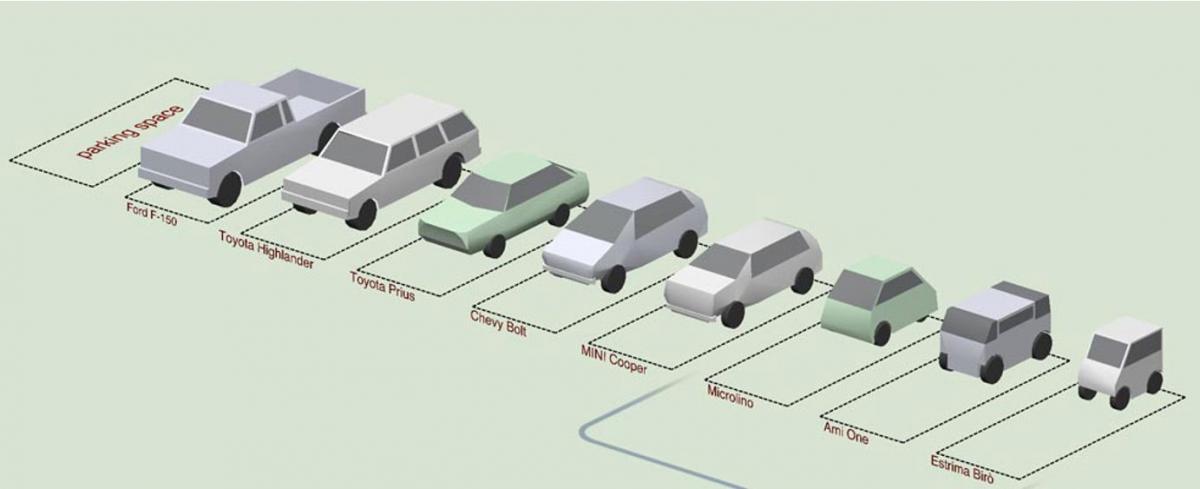
While conventional automobiles weigh 3,000 to 6,000 pounds and are designed to achieve speeds of 75 mph or more, NEVs typically weigh less than 1,500 pounds and by federal law have a maximum speed of 25 mph.2 (For being electric, they are remarkably lightweight.) But for a low-speed vehicle to safely move through a city, it will also require rethinking the design of major streets—avenues and arterials. When engineers and transportation planners design these streets, they also have a design vehicle in mind—fast-moving and highway-grade. As civil engineer and author Charles Marohn, Jr. has pointed out, transportation planners have failed to distinguish between streets (in town) and roads for distance travel (between towns). Thoroughfares that attempt to function both as a street and a high-speed road undermine the walking experience, prosperity, and sustainability of neighborhoods.3 A highway-grade design vehicle that dictates the form of streets and parking is a design blunderbuss just as zoning most of a city around one building type is.
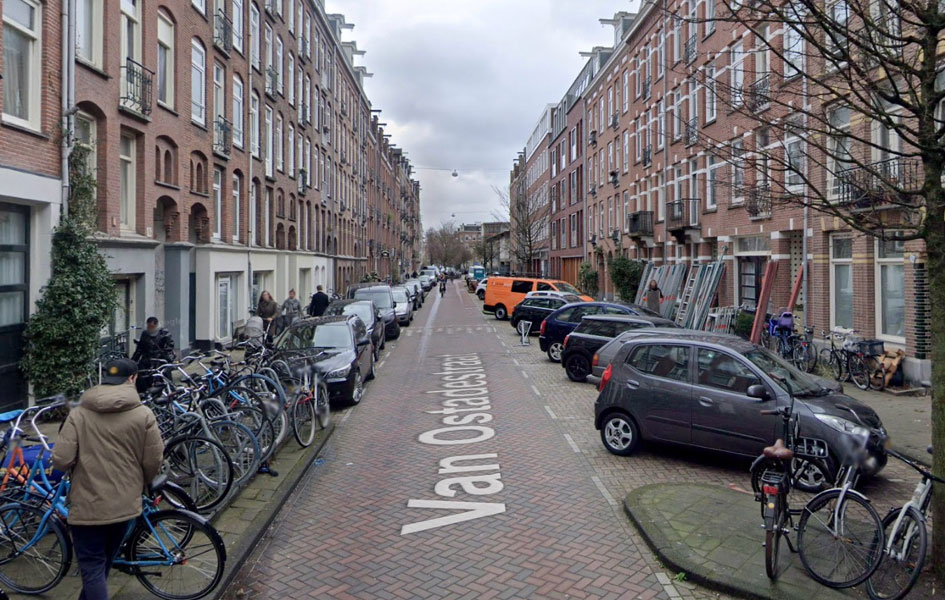
Automobiles are not going away
Cities like Amsterdam and Copenhagen are attracting worldwide attention for proving that societies can evolve away from total car dependence. (In Copenhagen the percentage of people who bicycle to work increased from 36 percent in 2012 to 62 percent in 2019.4 These compact, historic cities have long histories of a walking scale that in recent history have proven conducive to bicycling. Yet even Amsterdam and Copenhagen have plenty of room for improvement. A tour on Google Earth shows plenty of cars on the streets. The Netherlands is one of the densest and flattest countries in the world. Why does anybody drive?
In American cities the growth of micromobility—shared bicycles, e-bikes, and scooters—is matched by growing macromobility—bigger and bigger cars and trucks. The 4,000- to 5,700-pound Ford F-150 is by far the best-selling vehicle in America.5 (Ford recently announced its 2022 electric F-150, weighing in at 6,500 pounds!) If you look in your own community, you’ll see large pickup trucks bought not only by people in the trades, but also by people using them as personal, recreational, or family vehicles.
As American vehicles get bigger, they are undoing the carbon emission mitigations of micromobility. In the San Francisco Bay Area where I live, Berkeley and San Francisco are the two communities with the best urban bones conducive to walking and bicycling with slow-speed, interconnected streets; car-free living can be easily achieved. Yet even here only a minority of people have forgone the automobile.
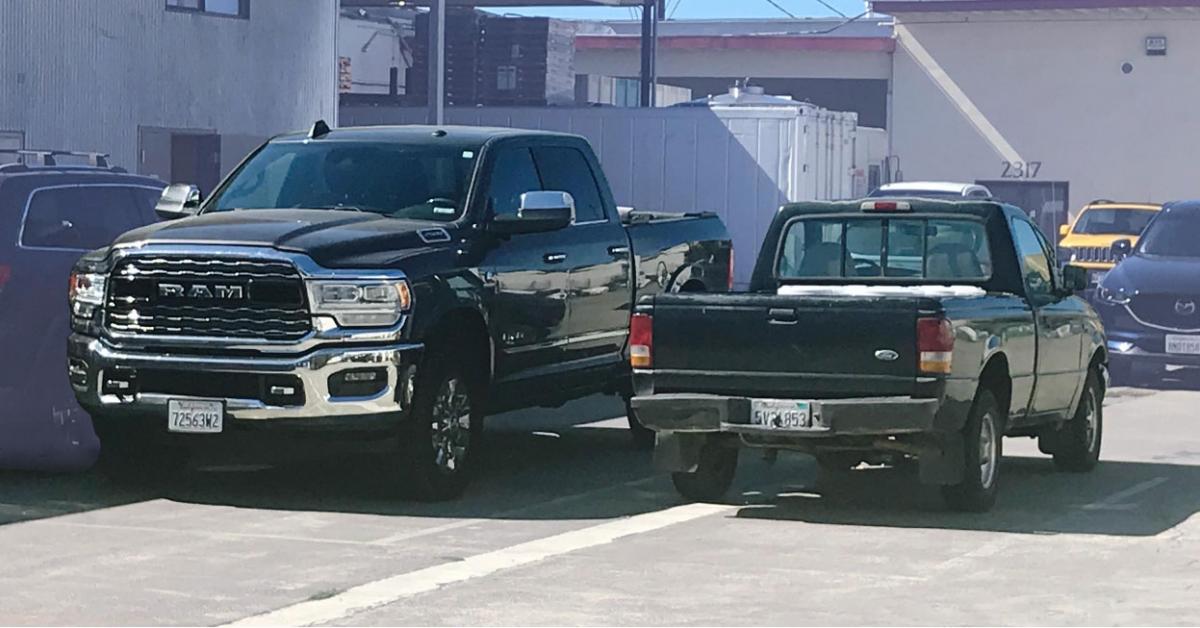
The reality is that many people simply won’t choose bicycling over driving. In that group, I include many of my dear friends. Some lack the physical confidence to bicycle or believe bicycles are unsafe. Some have a lifetime of habit to overcome. Some simply can’t muster the effort, just as many people find it difficult to eat healthy or give up smoking. Whatever the reasons, climate change is too dire to wait for everyone to forsake driving.
Besides, not everyone can live car-free, even if they wanted to. The professional class that prides itself on its environmental creds enjoys the benefit of commuting by transit, bicycling, or walking, usually along fixed routes. Yet many forms of work—home health care, construction, real estate—require going to a variety of work visits that don’t allow for predictable routes, thus requiring a vehicle. Also, many can’t leave equipment and paperwork in unsecured vehicles. We need to rethink the automobile.
As an alternative to large, highway-grade vehicles, small, lockable NEVs can cover an extensive local urban landscape. These small vehicles are protected from the elements by a roof and are usually fully enclosed, so they can be heated. Furthermore, they work well in topographically challenging neighborhoods.
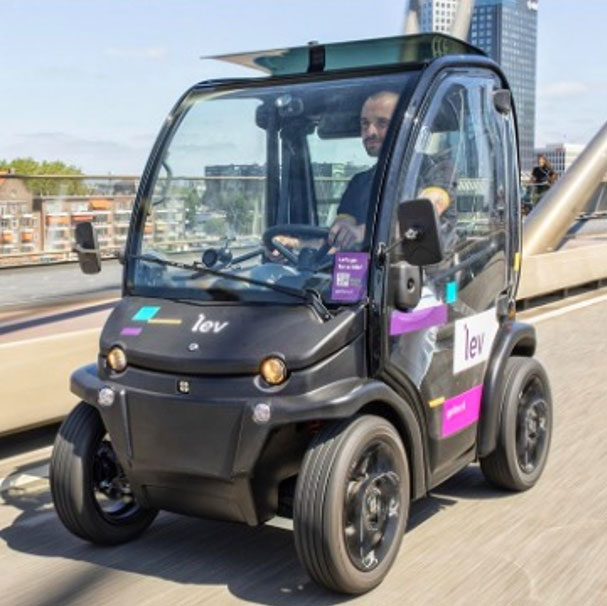
The role of NEVs in sustainable transportation
The most recent report of the United Nations’ Intergovernmental Panel for Climate Change warns that to avert climate disaster, change must happen faster and to a greater extent than we’ve assumed.The report is a “code red for humanity” says U.N. Secretary General António Guterres.6 Twenty-nine percent of greenhouse gas emissions are from transportation.7 Yet weaning the public off of cars may take generations.
For destinations within a 15-minute travel radius, what if we could get a healthy percentage of the population walking, riding e-bikes, and taking transit, with much of the rest driving small electric vehicles—NEVs as well as Vespa-like electric scooters and mopeds? The carbon emission reductions would be big: The Ford F-150 gets 18 to 25 mpg depending on the model while the Eli ZERO NEV claims 350 miles per gallon equivalent(mpge).8
As a personal vehicle, NEVs are affordable. According to Kelly Blue Book, the cost of a new car in 2021 starts in the $20,000 to $25,000 range and averages about $40,000.9 NEVs are much cheaper, most in the $10,000 range. If manufacturing ramps up, the cost would go down. There are NEVs sold in China for $2,500. Because they’re electric, they also save on maintenance and “refueling” costs. If most errands in multicar families are done with this more affordable vehicle and the highway-grade vehicle spends more time parked in the garage, the life of the bigger car will be greatly extended—and not be emitting greenhouse gases.
Picking up a medicine prescription, getting a haircut, and going to the post office shouldn’t require an SUV or F-150 pickup truck. If just an NEV is parked in the garage, room will still be available to store the owner’s possessions. Lightweight NEVs also extend the life of roadway surfaces, reducing the public maintenance costs of streets, which is good news for local governments.
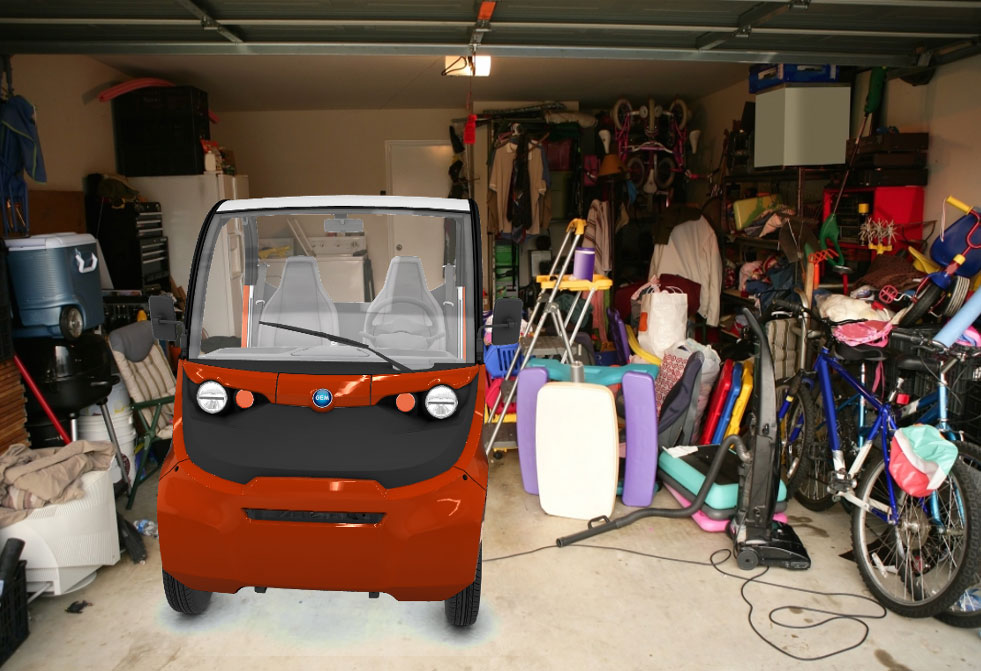
Widespread use of NEVs would not just be a technological fix. As per federal regulation, NEVs are limited to 25 miles per hour, so street systems will need re-evaluation. In many communities a 25-mph speed limit is possible on most streets. In Berkeley, California, where I live, all but two streets have 25 mph speed limits. (The two large streets are posted at 30 mph.) Many other cities across America have the potential for speed adjustments without making huge changes to urban form. For critical destinations too far for 25 mph travel, NEVs could be made available for rent at transit hubs: Take a train or bus rapid transit to travel fast, and then from a transit hub take an NEV to get to a destination too far from the station for walking or easy bicycling. With this service in place, most of a metropolitan region could be made accessible without requiring ownership of a highway-grade vehicle.
But what about grocery shopping?
Most of the YouTube videos of NEVs show two-seaters, because clearly the smaller the vehicle, the greater the benefits for navigating crowded urban conditions, reducing parking demand, lowering energy consumption, and mitigating carbon emissions. This is reasonable since most trips Americans make are as single occupants. (Polaris sells NEVs that also seat four and six people.) The two-seaters could replace the second car for families that only occasionally need a larger vehicle. The first car might be used so infrequently that it makes sense to forsake it for an account with a car-share company.
“But what about grocery shopping” is the frequent defense of highway-grade vehicles. Yet even the smallest NEVs with no passenger can easily store two or more bags of groceries behind the seats, one on the passenger seat, and one on the passenger-side floor. (Most people grocery shop as individuals and don’t bring the family along.) What about large, occasional purchases like microwave ovens, furniture, or lawnmowers? It’s odd that America’s vehicles are getting bigger while lower cost delivery of large items by Amazon and UPS is superseding the need for vehicles with large cargo capacity. Car ownership is expensive: loan payments, insurance, gas, licensing, maintenance, and depreciation all add up to $6,000 to $10,000 a year for a 3,000- to 6,000-pound vehicle; maintaining a highway-grade car in order to haul occasional large purchases rather than pay delivery costs, is a false economy.10
Many will argue that they need the highway-grade vehicle to get to their dentist or their favorite hairdresser in the next county. But that’s the tragedy of the modern automobile; it makes us blind to the richness of the landscape nearby and the creativity and skill sets of our neighbors. We think the highway-grade vehicle delivers more useful destinations when in reality it moves nearby things out of consciousness.
Local entrepreneurship struggles on arterials with traffic speeding past at 35 mph or faster. This raises a critical choice: Given the prevalence in America of these arterials, do you allow for faster NEV speeds so they can travel on these streets, or do retain the speed limits imposed on NEVs and slow speeds on the large streets? Allowing faster speeds might make more potential NEV motorists happier but would relinquish the economic opportunities, safety, and lower carbon-emissions of slower streets.
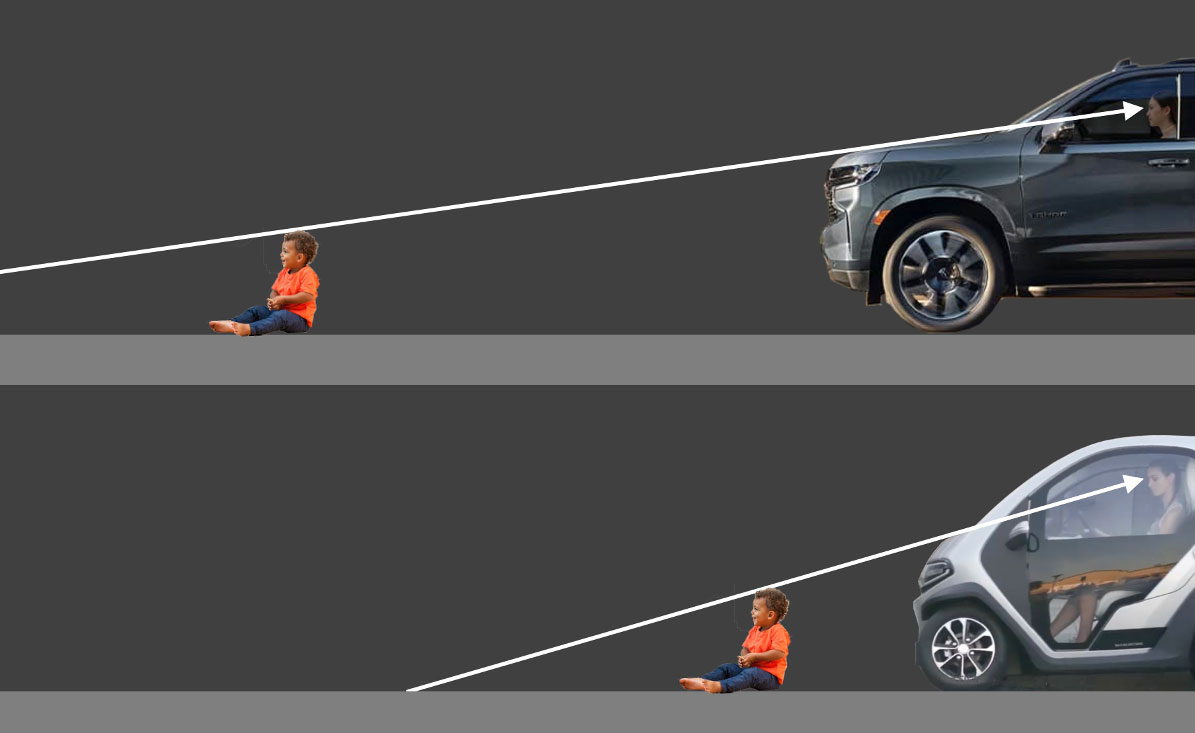
Weighing safety concerns
NEVs are small and vulnerable in crashes. Crash tests conducted by the Insurance Institute for Highway Safety shows that they are vulnerable when hit by larger, heavier automobiles. Of course, so are small mail trucks, parking enforcement vehicles, mopeds, motorcycles, and bicycles. Concerns about safety are valid where these vehicles must share road lanes with highway-grade vehicles moving fast. (According to Dan Sturges, inventor of the GEM NEV, there are as many as 100,000 GEMs being used, but Sturges knows of only one fatality in a GEM, and the driver was intoxicated.)
Many car buyers assume that traveling in a bigger, heavier vehicle is safer, but as highway-grade cars get larger, they are less safe for people on the streets. New SUVs and trucks are now sold with high, squared-off front ends that no longer just crush pedestrians’ legs, but also crush internal organs. (Pedestrian deaths in the United States have increased over 51 percent since 2009.11 Those high front ends also reduce visibility of the road ahead for drivers; tragically, in America parents are inadvertently driving over their own children in increasing numbers.12 Most of the NEVs by contrast have excellent road visibility for the driver.
If you closely examine the map below showing the locations of automobile-related deaths in the Berkeley-Oakland area from 2005 to 2019, you’ll see that the overwhelming number of deaths occur on freeways and large streets rather than on local 25 mph streets, where deaths are a rarity. On large streets highway-grade vehicles are dangerous to pedestrians, bicycle riders, and, judging by the data, also the vehicles’ occupants.
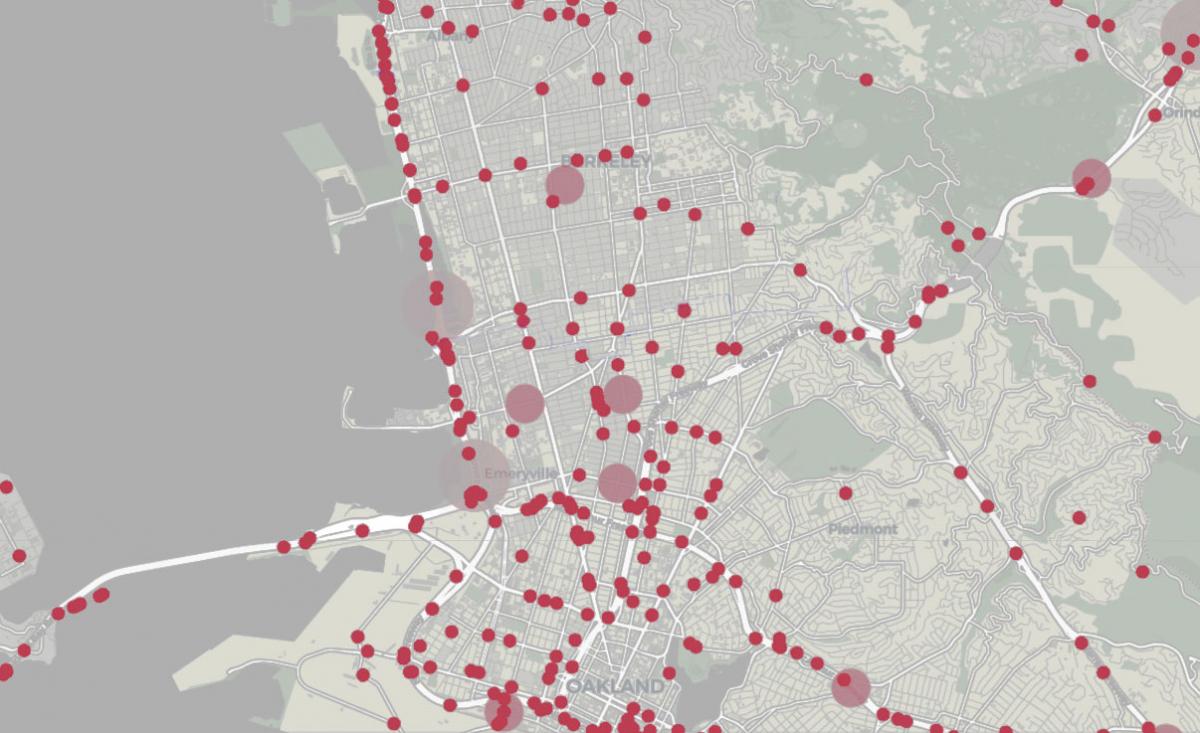
Prevented by law from going more than 25 mph, NEVs are ill-suited to drive on large avenues and arterials with posted speed limits of 35 to 45 mph. In 33 states low-speed vehicles are allowed on 35 mph streets. Other states allow them on even faster streets. Yet going 25 mph on a 35-mph street will feel unsafe. Remarkably, cities will stripe these streets with painted bike lanes, apparently oblivious to how dangerous bicycling is on these streets. According to the California Office of Traffic Safety, 72.1 percent of fatal bicycle accidents occur on principal (48.3 percent) and minor (23.8 percent) arterials.
In the United Kingdom, a citizens’ campaign entitled 20’s Plenty for Us is advocating for 20 mph speeds for city streets.13 Paris recently reduced speeds to 19 mph for almost all streets. According to data from the AAA Safety Foundation, speeds above 20 mph quickly increase pedestrian fatality rates.14 As Charles Marohn has pointed out, within a city higher speeds result in diminishing returns on travel times. Driving fast between traffic signals doesn’t save that much time and produces less-safe conditions. Leave the higher speeds for the highway outside of town says Marohn.15
Most major streets in America are barriers to free movement
We need to rethink the speeds on these streets.But just changing the speed limits posted on signs is a notoriously poor way of slowing down travel. If a street has been designed for faster speeds—wide travel lanes, dedicated right-turn lanes, more lanes than traffic warrants, large radius street corners—then drivers will routinely exceed posted speed limits. Avenues and arterials should not be no man’s lands for all but people moving in highway-grade vehicles.
Rather they should provide access to stores, services, and civic uses that fulfill our living needs. In the post–World War II era, important community uses have moved from downtowns and main streets to these big streets. If major streets provided for the fulfillment of daily needs without requiring high-speed vehicles as an entry requirement, then bicycles, scooters, mopeds, and NEVs could be used for running errands.
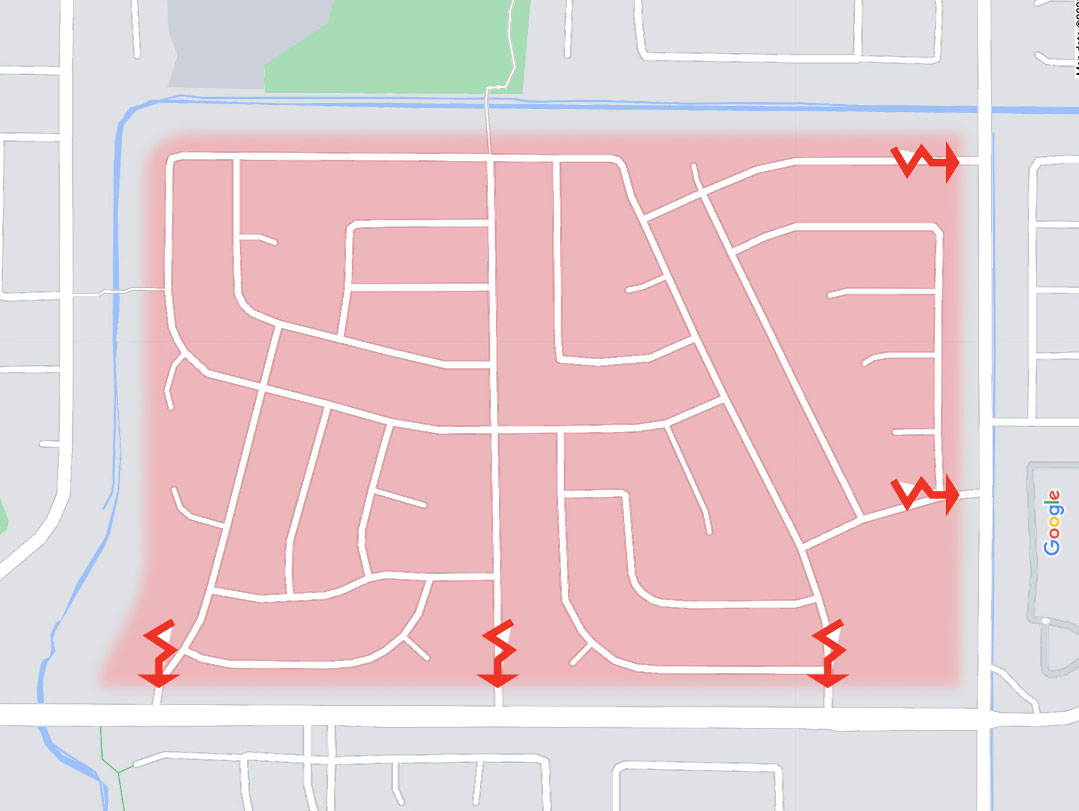
In addition to not welcoming pedestrians, bicycle riders, and slow-speed NEVs, large streets too often are obstacles for movements across them, what Todd Litman of the Victoria Transport Policy Institute calls the barrier effect. In post–World War II suburbs, residential streets very often dead-end at these bigger streets, requiring hazardous travel along them to get to a street for continuing in a path of travel. If bicycles, NEVs, mopeds, and scooters can’t travel safely on them, this leaves these modes of travel restricted to tightly confined areas bounded by these impassable streets. In suburbs, that means being confined to single-family, detached-house zones with no useful destinations. Consequently, Americans use highway-grade vehicles regardless of how minor or close by the errand.
If redesigned for slower speed, urban avenues and arterials could serve the daily needs for nearby residents to safely travel by a variety of means. Vehicles would travel shorter distances, travel times on the avenue would be reduced, and collisions would decline in frequency. If travel lanes could be narrowed and their number reduced to what traffic warrants with slower speeds mandated, NEVs—as well as the many new micromobility vehicles coming on the market—could safely travel on these streets along with highway-grade vehicles.
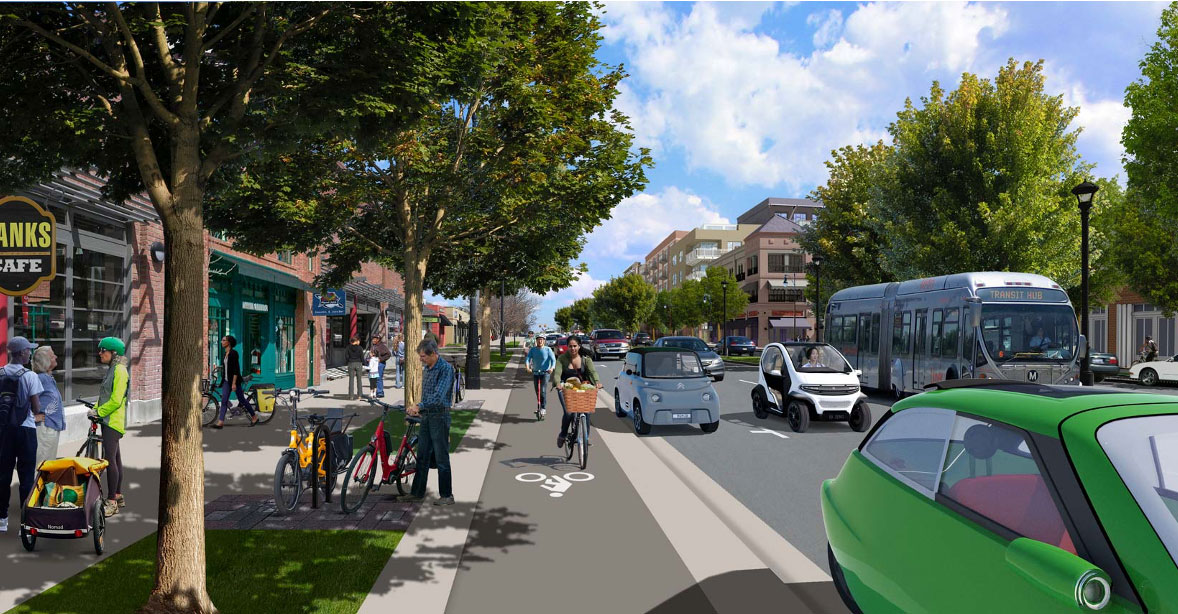
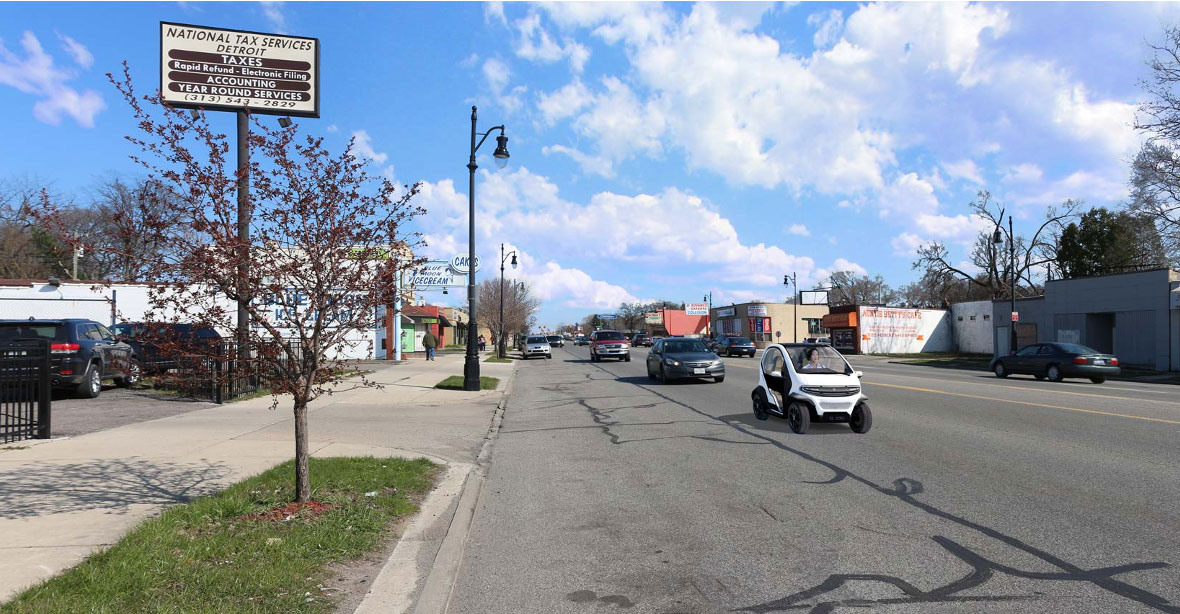
Many people could forgo highway-grade vehicles entirely. Increasingly cities are seeing low-density arterials as opportunity sites for much needed housing; these new residents will also desire access to the uses on the arterials. Avenue housing projects could even offer a small number of NEVs for use by residents for running errands as a buy-in amenity.
Good for local businesses
NEVs could also catalyze change to vehicle parking that would benefit local businesses. Currently, the highway-grade vehicle is the implicit design vehicle dictating the size of parking spaces. But what if the future is one of tremendously varied vehicle sizes? Parking NEVs would use an unnecessary amount of space (fig. A). Maybe the conventionally sized parking space needs to be re-evaluated.
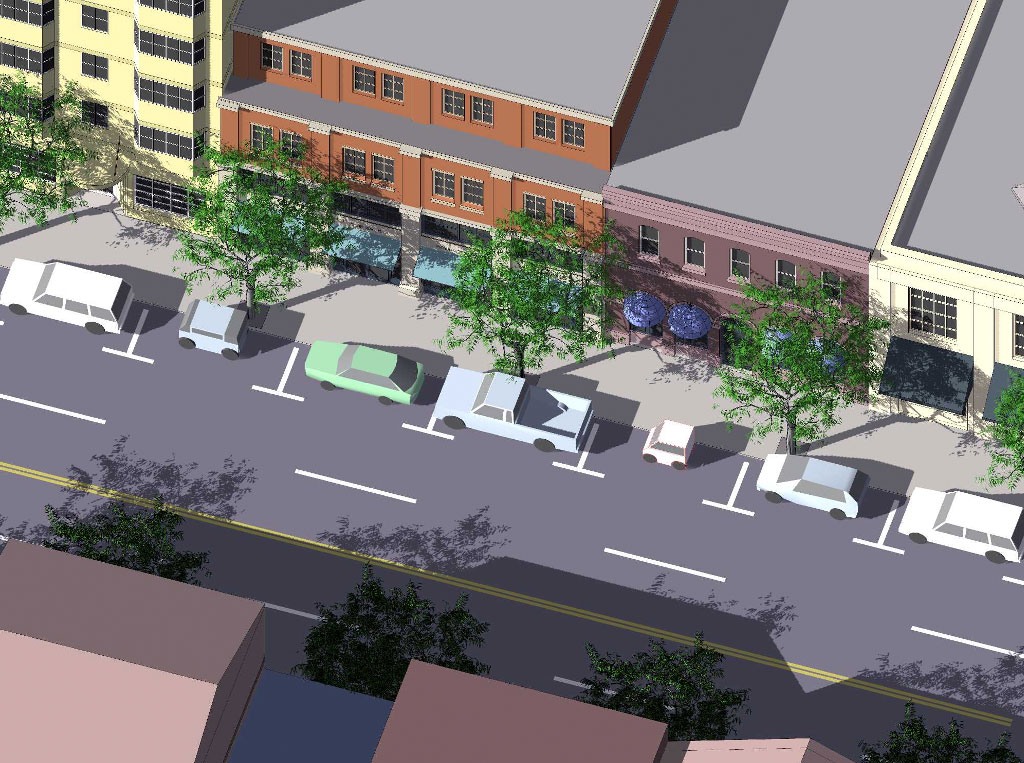
What if on-street parking spaces could be subdivided into smaller parking units? You would only pay for the number of parking units your vehicle covered. A large vehicle would require the driver to pay for three units, whereas the driver of a Honda Fit or Chevy Bolt would pay for two. An NEV, Vespa-style scooter, or motorcycle would occupy only one unit (fig. B). In this scenario, small merchants would benefit from a lot more customers parking their vehicles in front of their businesses. If enough of this type of subdividedparking showed up in commercial centers, then motorists would be incentivized to drive smaller vehicles, parking them would be cheaper, and it would be easier to find available small spaces. Finding it easier to park, these small vehicles would spend less time roaming for parking, thereby reducing downtown congestion, and improving the predictability of public bus arrivals. With the addition of protected bike lanes and bike racks (fig. C), sidewalks would be activated with more and more people.
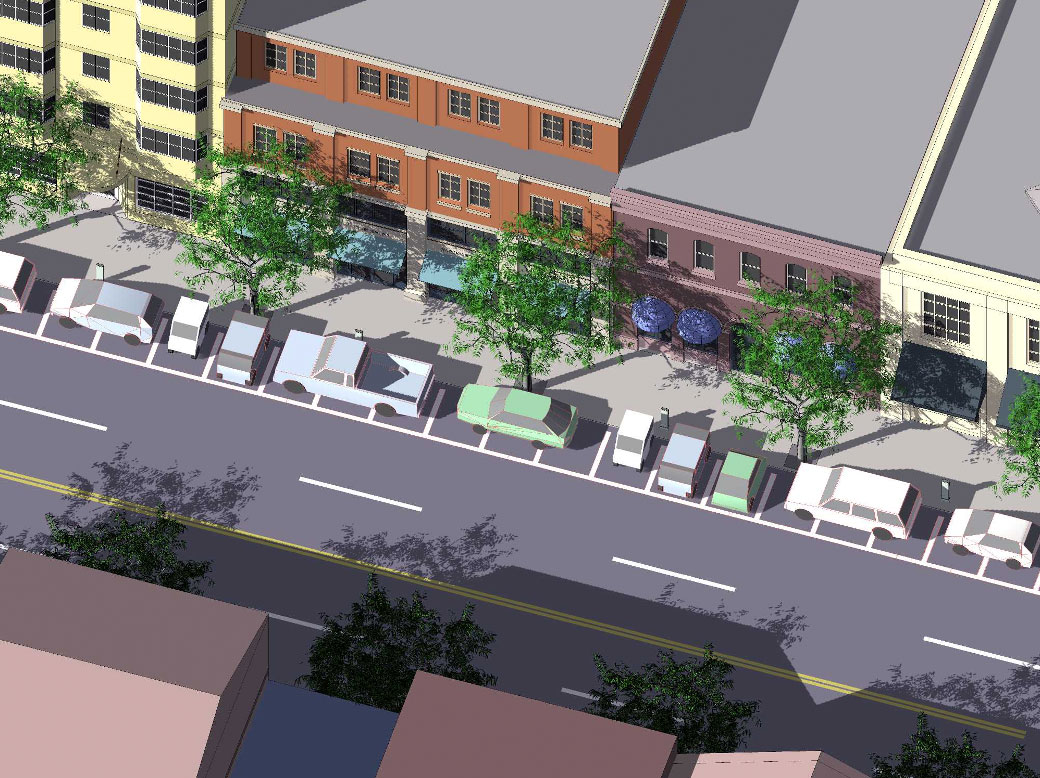
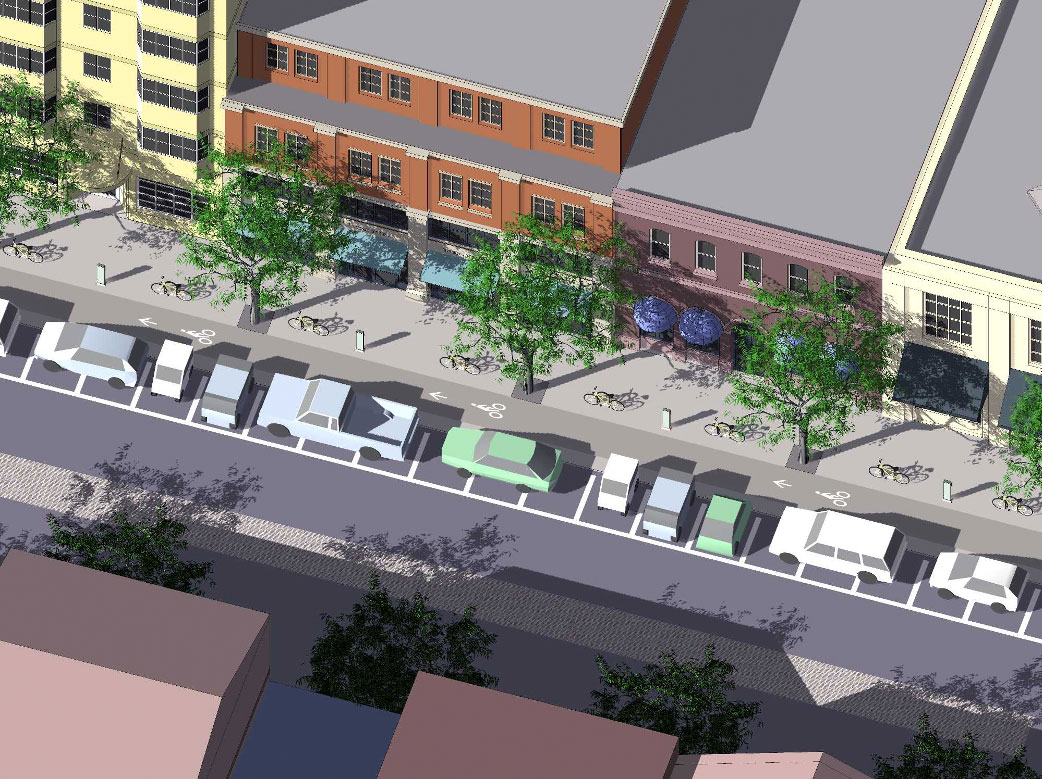
Can NEVs save the suburbs?
Many urbanists have given up on much of post–World War II suburbia as unwalkable and unsafe for bicycling because of the large sizes of streets, fast vehicle speeds, lack of street interconnections, and withering distances one must walk to get anywhere, not to mention the consequent large carbon emissions. Seventy-five percent of the area of many American cities is zoned for single-family detached houses. For the last 50 years that development pattern has sprawled more and more, making distances for walking, and bicycling longer and longer. In only 16 states do at least 30 percent of people live in places that are highly walkable.16 Berkeley has a Walk Score of 83 (highly walkable), so I realize that I should temper my optimism about national change when I see increasing numbers of pedestrians and bicyclists in my neighborhood. Aside from places with compact, interconnected street systems like those found in historic cities and inner-ring suburbs, on a warming planet the rest of the built landscape may just have to go to ruin. But is this really an option? Deliberately letting newer suburbs decline would unleash ferocious political backlash.
New Urbanists advocate for the retrofit of declining shopping centers into mixed-use, walkable town centers. If we are social animals, which humans are, then gathering places are not amenities but rather necessities. Contrary to what we believe about ourselves, our behavior is not primarily directed by our own rational decision making, but rather by mimicking the useful behaviors of others. "Human beings are the premier imitators on the planet," says Andrew Meltzoff of the University of Washington Institute for Learning and Brain Sciences.17 To learn from others, humans need to be exposed to each other visually.
But how will the locals living in the subdivisions surrounding retrofitted suburban shopping centers get to these new centers where other people are? Post–World War II suburbshave few intersections per square mile. Few intersections mean streets don’t connect and routes to any destination are circuitous and far. With poorly interconnected street systems, residents will drive to retrofitted shopping centers in their highway-grade vehicles, likely requiring that the centers retain extensive surface parking lots or include expensive, structured garages.

In American suburbs, dislodging the sovereignty of the fossil-fueled automobile is very difficult, although in time the vehicle of choice will increasingly be an electric car. But simply electrifying highway-grade vehicles will not change the many downsides of low-density, post–World War II sprawl: the enormous financial costs of maintaining such extensive infrastructure, the public health costs from lack of walkability, weak community identity, and persistent traffic congestion.
Many of the newer suburbs are home to a range of residents across the political spectrum. These are places increasingly where new ideas for addressing climate change will find audiences. Electric bicycles, electric Vespa-style scooters, and NEVs can traverse suburbandistances, but changes to existing suburban streets will be critical to make them safer for these modes of travel—slowing them with narrower travel lanes, more street trees, separated bicycle lanes, and reduction of the number of travel lanes whenever possible. Travel could then bring residents to practical and socially rewarding destinations without needing a highway-grade vehicle.
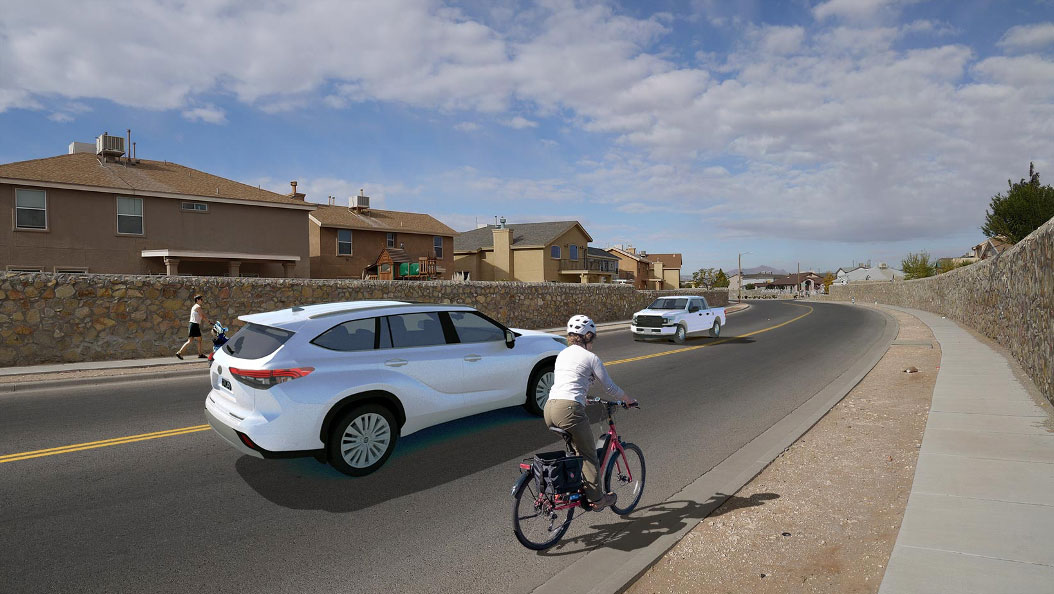
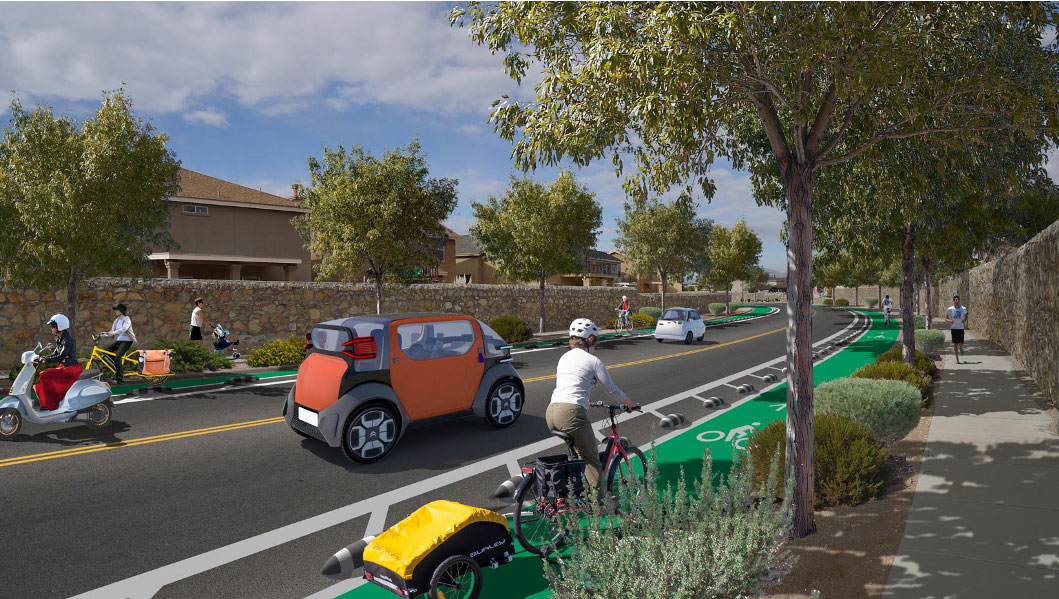
Collector street can be remade for e-bikes, NEVs, and Vespa-style electric scooters. (Image by Steve Price)
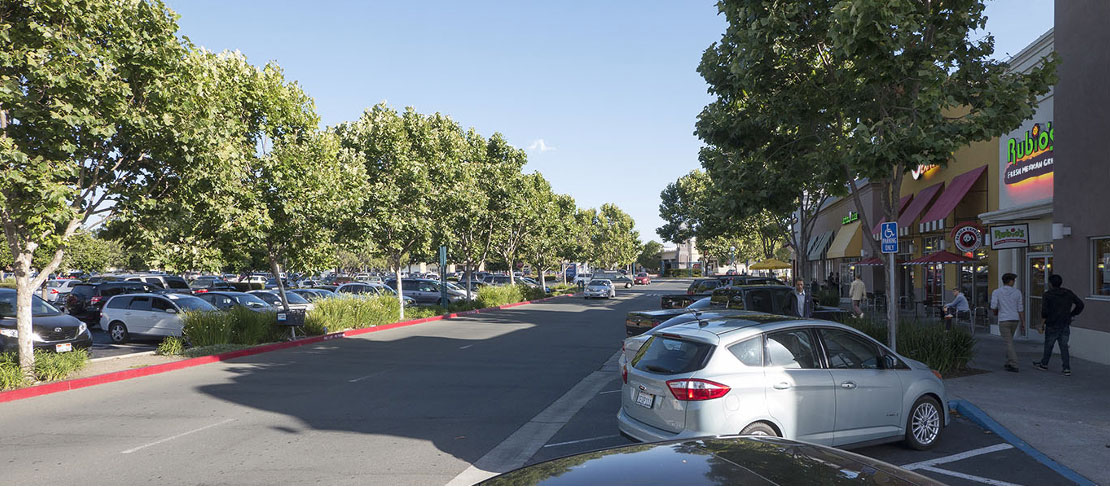
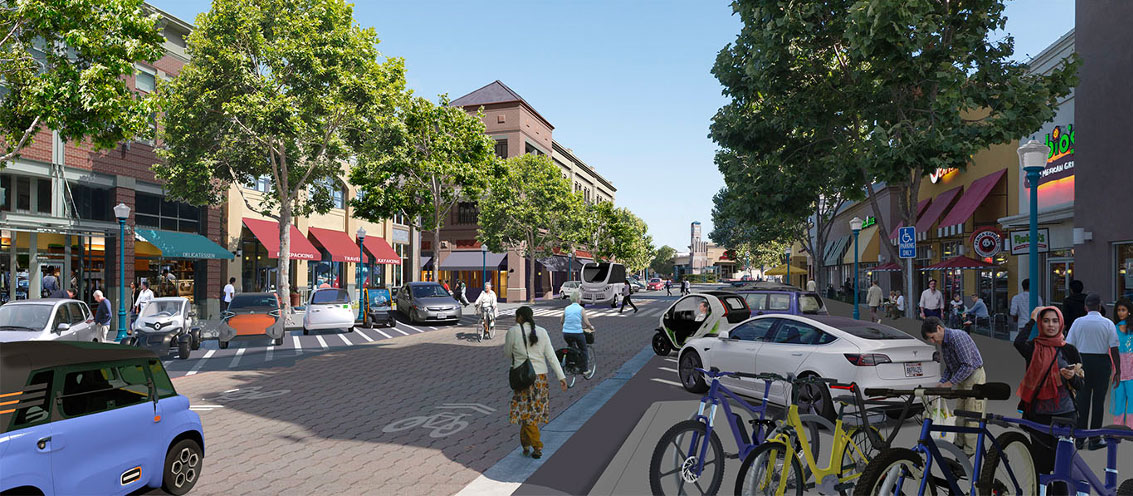
NEVs are not a mode of active transportation. Like highway-grade vehicles, the driver sits and presses an accelerator pedal. Driving them requires no physical exertion. Does this mean they will be another new technology that sets back public health, especially in suburbs where the driving habit is so engrained? Yet if motorists can be convinced to make most of their trips by this means, the street modifications necessary to make that possible would benefit pedestrians and bicycle riders: Narrower travel lanes would mean streets are safer to walk across. If vehicles generally travel slower and shorter distances, then pedestrian and bicycle fatalities would be reduced. If more vehicles can park in front of businesses, then sidewalk orientation would help those businesses thrive and provide more useful and attractive destinations for walking. Safer streets would encourage the use of NEVs that double the miles-per-gallon equivalent(mpge) of conventionally sized electric vehicles, quintupling and more the energy efficiency of hybrid vehicles, and improving energy use 10- to 16-fold over that of internal combustion vehicles. This is all good for planetary health, and, in turn, public health. The benefits would be for city and suburb alike.
Our over reliance on highway-grade vehicles for all trips has degraded major streets to passageways through diffuse and spotty land uses and has made traveling needlessly long distances a bad habit. Driving fast on these streets does not allow for appreciation of their assets.Most towns and cities have major streets that serve vital purposes. They are the identifying face of a city as much as its town centers. Major streets knit neighborhoods together, producing larger civic identity. Many major streets culminate at important urban centers and serve as the corridors of major transit lines. They provide retail and services, denser housing, office buildings, and large civic uses, which are useful to motorists and pedestrians alike. Major streets should serve not just highway-grade vehicles, but also walking, bicycling, and NEVs. If they bring communities together rather than spread them apart, they can be important routes forward for mitigating climate change while meeting human needs. The technology of electric micromobility introduced to streets slowed to welcome it offers hope for a low-carbon future.
1 Melanie Curry, “Bikes and Scooters Could Replace a Lot of Car Trips in U.S. Cities,” STREETSBLOGCAL, September 16, 2019, cal.streetsblog.org/2019/09/16/bikes-and-scooters-could-replace-a-lot-of-car-trips-in-u-s-cities/ - disqus_thread
2 National Highway Traffic Safety Administration, “Federal Motor Vehicle Safety Standards; Low Speed Vehicles,” Federal Register, August 17, 2005 www.federalregister.gov/documents/2005/08/17/05-16323/federal-motor-vehicle-safety-standards-low-speed-vehicles
3 Charles Marohn, Jr., Confessions of a Recovering Engineer, John Wiley & Sons, Inc., Hoboken, New Jersey, 2021
4 Erik Kirschbaum, “Copenhagen has taken bicycle commuting to a whole new level,” Los Angeles Times, August 8, 2019, www.latimes.com/world-nation/story/2019-08-07/copenhagen-has-taken-bicycle-commuting-to-a-new-level
5 Lyndon Bell, “Why The Ford F-150 Is The Best Selling Vehicle In America,” Autobytel,
www.autobytel.com/ford/f-150/car-buying-guides/why-the-ford-f-150-is-the-best-selling-vehicle-in-america-130601/
6 Secretary-General António Guterres, “Secretary-General Calls Latest IPCC Climate Report ‘Code Red for Humanity’, Stressing ‘Irrefutable’ Evidence of Human Influence,” United Nations: Meetings Coverage and Press Releases, August 9, 2021, www.un.org/press/en/2021/sgsm20847.doc.htm
7 U.S. Environmental Protection Agency, “Sources of Greenhouse Gas Emissions,” www.epa.gov/ghgemissions/sources-greenhouse-gas-emissions
8 Steve Hanley, “Meet The Fully Updated Eli ZERO—An Electric Car Designed To Conquer Urban Congestion,” CleanTechnica, November 2, 2020,
cleantechnica.com/2020/11/02/updated-eli-zero-electric-car-conquer-urban-congestion/
9 Matt Degen, “This is now the average price of a new car,” MarketWatch, February 23, 2021, www.marketwatch.com/story/this-is-now-the-average-price-of-a-new-car-11613683827
10 AAA Automotive, “Average Annual Cost of New Vehicle Ownership,” AAA, 2021, www.aaa.com/autorepair/articles/average-annual-cost-of-new-vehicle-ownership
11 Insurance Institute for Highway Safety, “Fatality Facts 2019: Pedestrians,” March 2021, www.iihs.org/topics/fatality-statistics/detail/pedestrians
12 WTHR.com staff, “Dangers in your vehicle's ‘blind zone’,” WTHR, August 9, 2019, www.wthr.com/article/news/investigations/13-investigates/13-investigates-reveals-hidden-dangers-your-vehicles-blind-zone/531-c8719d90-f43b-418c-af1e-dd2450ee8be7
13 20’s Plenty for Us: making your place a better place to be, www.20splenty.org/
14 Angie Schmitt, “3 Graphs That Explain Why 20 MPH Should Be the Limit on City Streets,” StreetsBlogUSA, May 31, 2016, usa.streetsblog.org/2016/05/31/3-graphs-that-explain-why-20-mph-should-be-the-limit-on-city-streets/
15 Charles Marohn, Jr., Confessions of a Recovering Engineer
16 Angie Schmitt, Public Health Experts Give America an “F” on Walkability, StreetsBlogUSA,September 27, 2017, usa.streetsblog.org/2017/09/27/public-health-experts-give-america-an-f-on-walkability/
17 Eva Botkin-Kowacki, “Beyond flattery: Why imitation could be humanity’s most distinctive feature,” The Christian Science Monitor, July 18, 2017, www.csmonitor.com/Science/2017/0728/Beyond-flattery-Why-imitation-could-be-humanity-s-most-distinctive-feature




